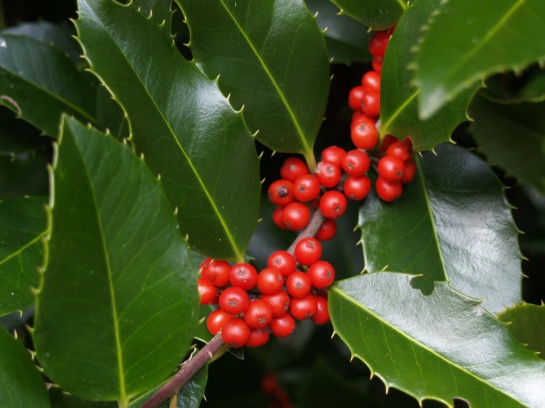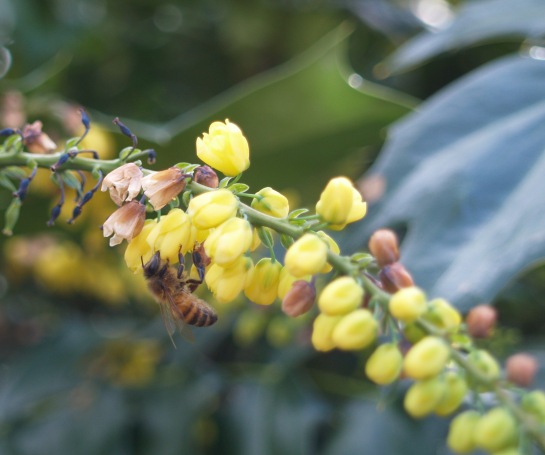 The winterberry hollies (Ilex verticillata ‘Sparkleberry’, above) have been stripped bare. The shrubs are situated along the driveway so that they cannot be seen in the usual course of a day, so it’s not possible to know if the birds made off with the last of the berries a day, or a month ago.
The winterberry hollies (Ilex verticillata ‘Sparkleberry’, above) have been stripped bare. The shrubs are situated along the driveway so that they cannot be seen in the usual course of a day, so it’s not possible to know if the birds made off with the last of the berries a day, or a month ago.
Of course, I assume that birds absconded with the berries rather than that they merely fell off onto the ground. There have been no dramatic droughts or heat waves to cause the berries to drop, and it should be obvious that birds have fewer food choices in late December. As always, the abundant berries of evergreen hollies (Ilex koehneana, above) and nandinas (Nandina domestica) remain undisturbed, so it seems safe to assume they are unpalatable, but still they are lovely to look at.
Many garden references attribute the red berries of the native American dogwood (Cornus florida, above) to winter interest, though in my garden not a single fruit has ever lasted until winter (or even to Thanksgiving). Again, I have not seen a bird snatch a single berry from the dogwoods, but one day the berries are in full display, and the next time the gardener looks, they’re gone. I suspect that birds are able to figure when the berries have properly ripened, and then they make short work to strip every last one.
At midday on one of the recent days when temperatures soared into the sixties, a scattering of honeybees were seen on the blooms of the ‘Winter Sun’ mahonias (Mahonia x media ‘Winter Sun’, above). I know far too little about the birds, butterflies, and bees that frequent the garden, but I understand that the natural cycle is that few bees survive the winter. I suppose that when temperatures rise the few are encouraged to get out to gather nectar from the odd flower.
How it is that a bee would consider that anything would be flowering in winter confounds me, and how would they find the widely scattered blooms? I’m certain that there are readily found explanations for this, and perhaps I should spend a few of my leisure hours this winter investigating further. I should also research to help to identify the local bird population so that I can distinguish more than only cardinals and hawks.
In recent years there have been many fewer honeybees in the garden, though bumblebees, wasps, and hoverflies are plentiful. Through spring and summer when there are abundant blooms, my curiosity too often leads me to poke my nose much too close to too many stinging creatures, so I’m overjoyed to see the honeybees hard at work on a winter afternoon.
Watching the insects do their thing is fascinating, no? Like you, I always wish I understood more of the science behind their instincts. I didn’t pay attention in school like I should have (particularly where science was concerned) and now of course, I regret it!
I hope you have a great New Year! I’m look forward to more of your postings in 2014. 🙂
I have no regrets about the lack of seriousness with which I approached my formal education. Today, so much information is so readily available that I’m able to fill in the blanks whenever the moods strikes. I’ve recently been reading up on plant taxonomy, which has again confirmed my lack of patience and short attention span. Thanks for reading.